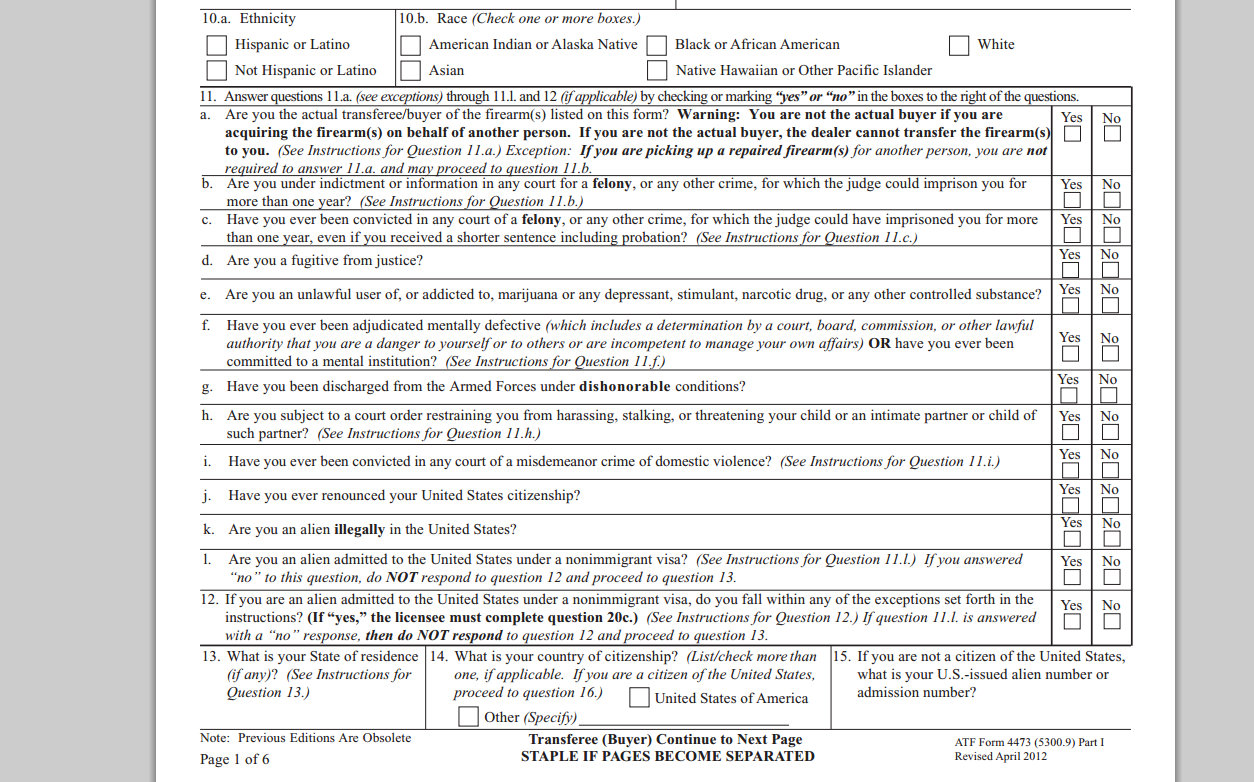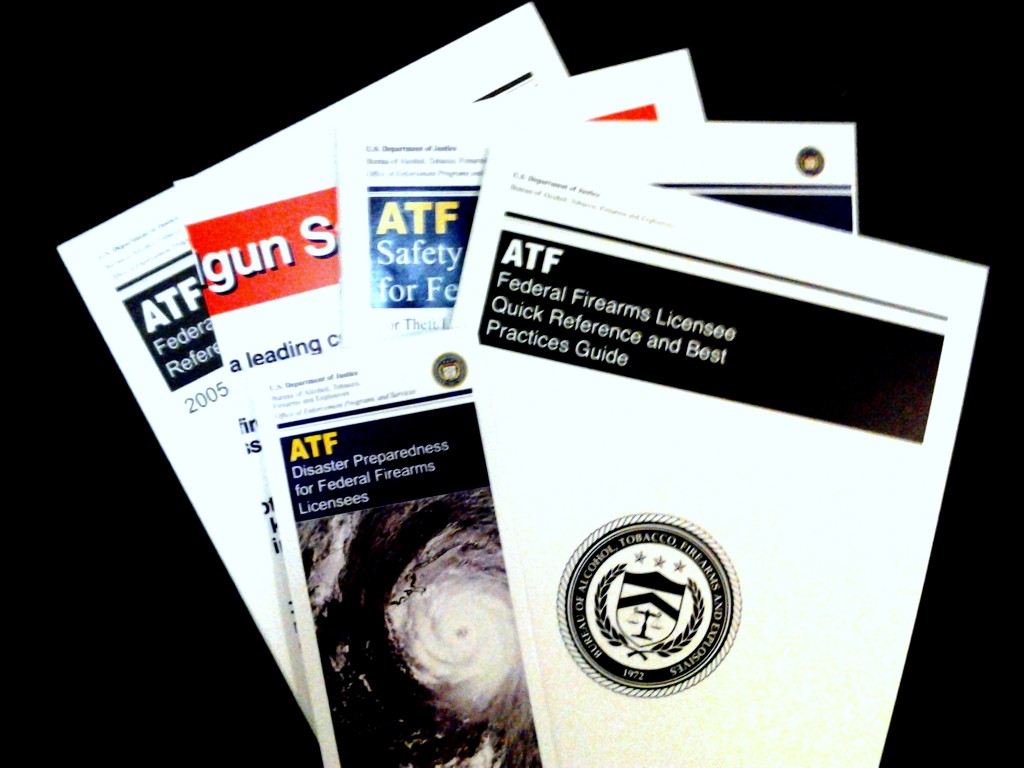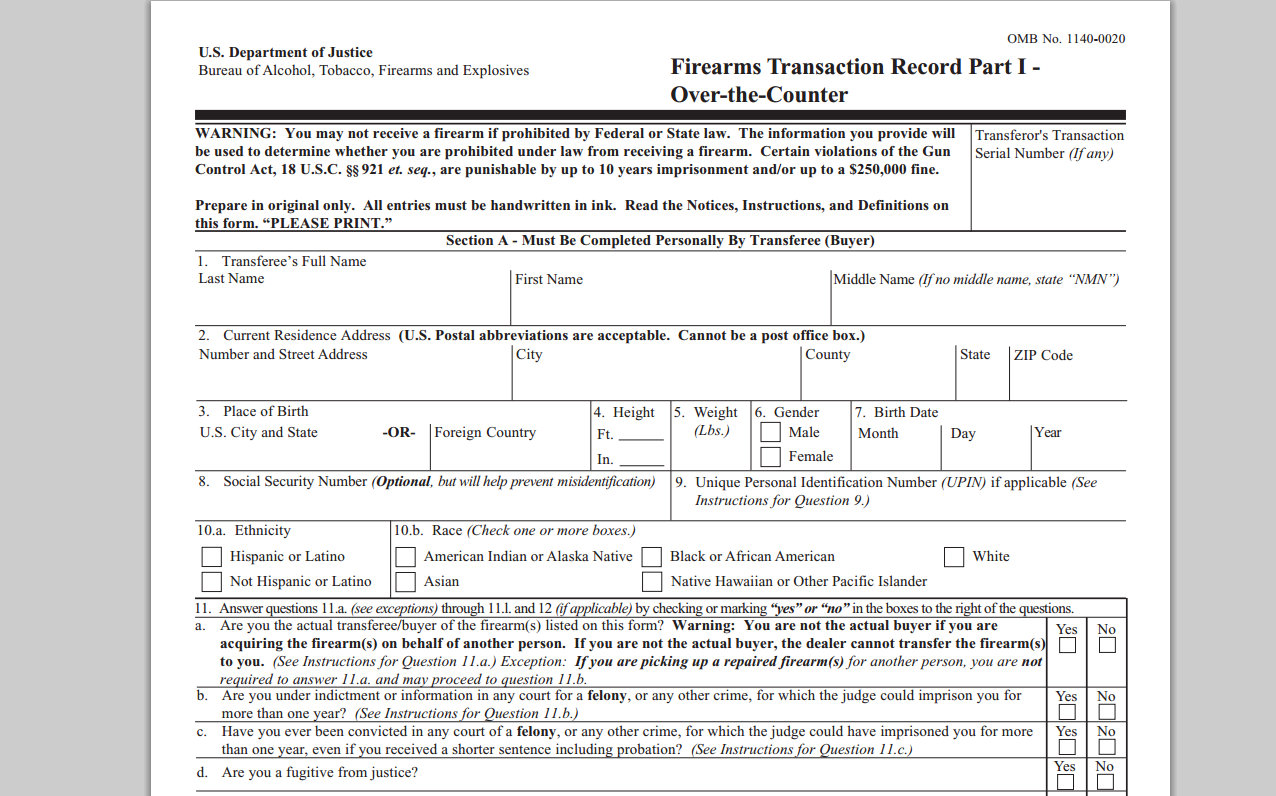Please read our privacy policy and disclaimer information in the legal section of FFLConsultinggroup.com.
The ATF Form 4473 is a critical element of the overall regulatory scheme implemented by ATF in accordance with the provisions of the Gun Control Act (GCA). It is critical for FFLs to understand the ATF 4473 and ensure that it is accurately executed when firearms are transferred to a non-licensee. ATF Investigators are very effective at finding errors and omissions on the executed forms. The ATF Form 4473 can also be an FFLs best friend in many many ways. So, it’s beneficial for FFLs to become proficient at properly executing the ATF 4473.
Understanding ATF’s Mission
The ATF is responsible for enforcement of the Gun Control Act as well as other relevant firearms related federal law. FFL compliance inspections conducted by ATF Industry Operations Investigators are a critical element in ATF’s mission as a law enforcement agency. Compliance with ATF regulations should be an integral part of the business plan and mission of the FFL. FFLs should incorporate ATF compliance training into any established employee training program.
In order to assist FFLs in achieving high levels of compliance with ATF regulations, an examination of ATF’s mission statement is useful.
ATF’s Mission Statement Reads In Part:
Reduce the risk to public safety caused by illegal firearms trafficking.
Reduce the risk to public safety caused by criminal possession and use of firearms.
Improve public safety by increasing compliance with Federal laws and regulations by firearms industry members.
ATF’s mission with respect to firearms is rather narrow.
1) Reducing risk to public safety as a result of illegal firearms trafficking, criminal possession and use of firearms.
2) Increasing compliance with federal regulations by firearms industry members.
ATF accomplishes this is by conducting criminal investigations, related activity, and conducting FFL compliance inspections.
Why Is It Important To Understand ATF’s Mission?
The reason it’s important to have a basic understanding of ATFs mission is because as federal licensees, it is beneficial to us to be familiar with the reasoning behind the strategies and tactics used by ATF in their inspection and compliance regime. By understanding the purpose of ATF’s visit to your gun store, manufacturing plant, or warehouse, you should be able to better prepare your business for their examination.
You should also be able to engage the ATF Investigator (IOI) in a more insightful way because of a better understanding of what they are there to do. A preferable situation as opposed to one tainted by pre-conceived notions that are usually erroneous.
This insight helps FFLs communicate better with ATF inspectors, avoids misunderstandings, and focuses everyone on the task of getting through the ATF audit quickly and efficiently.
Maybe more importantly, understanding ATF’s mission helps us to develop strategies and tactics to better improve our overall compliance posture.
FFL ATF Inspection: What will likely be the focus?
With respect to the average retail firearms store front business, ATF inspectors will likely focus generally on three elements of the business. One, the proper execution of the ATF Form 4473; two, the accuracy and timeliness of the entries in the record of acquisition and disposition of firearms; and three, the integrity and proper documentation of the firearms inventory currently on hand.
These are basic elements of an ATF compliance inspection. Any FFL who has been through an ATF inspection can attest to that. Within the scope of those three elements, there are several other directions in which an inspection can go depending on several factors. Also, depending on the type of firearms business conducted, there are a number of other peripheral issues that become relevant, but in essence, the three elements mentioned are the basis for the methods used in ATF compliance inspections.
With that in mind, let’s take a look at some things FFLs can do with respect to the execution of the ATF Form 4473 to lessen the probability of being cited for a public safety violation.
ATF Form 4473 example | ATF Form 4473 Instructions
The time to ensure the ATF Form 4473 is properly executed is before the buyer/transferee walks out of your store with a firearm. However, it’s also important that FFLs examine their executed forms prior to an ATF inspection and correct any problems with the forms. Conducting examinations of your executed forms periodically goes a long way in maintaining compliance.
Although ATF investigators will likely not use a “checklist” to audit a firearms business, FFLs should benefit by using some sort of checklist system to evaluate their own compliance.
For retailers, the ATF Form 4473 can be a sore spot, and ATF investigators are well trained and usually very good at finding errors and omissions.
Subscribe to FFLPro News for more compliance tips and strategies.
ATF Form 4473 Examination
Reference: 27 CFR §478.124.
The items below refer to the ATF Form 4473 revised April 2012
- Execute and file forms immediately after the transaction is completed. Don’t leave blanks or stack the forms to “finish them later”
- Ensure forms are filed in alpha, chronological or numeric order
- Try to be organized and neat in the way the forms are filed. This indicates that the FFL is careful, organized, professional, and likely to be in compliance in all aspects
- Use serial numbers for the 4473 that refer to positions in your A&D book.
- Ensure buyers indicate their full name in item 1 or “nmn”. Do not use initials unless the name is a single letter.
- Ensure a full street address is included in item 2. Check for clarity
- Ensure place of birth (U.S.) or foreign country is included in item 3. Foreign “Country” is sometimes mistaken for “County”. Keep in mind that these types of errors can technically be considered a violation.
- Ensure items 4 – 7 are filled out properly. It is not uncommon for omissions to exists in these detailed areas of the form.
- Items 8 – 10. Ensure all identifying data are entered. It is not uncommon for these items to be left blank by buyers. Although this should have been caught prior to transferring a firearm, there is now an opportunity to correct the form prior to inspection by ATF.
- Item 11 is a critical item, that if not addressed properly can cause many regulatory problems for FFLs.
- Ensure that transferees have not answered “yes” to any questions indicating that the transferee is prohibited from receiving or possessing firearms.
- It is not uncommon for Item 11a “Are you the actual transferee/buyer…” to be answered incorrectly. Ensure you have not transferred a firearm to a person indicating a “No” answer in this block.
- Also pay special attention to Item 11k. The word “illegally” is read as “legally” many times. A transferee reading the item incorrectly would indicate a prohibition to receiving firearms from a FFL.
- Ensure Items 13 – 15 are correctly filled out. Be cautious of Item 13 especially. If the transferee indicated that they are a resident of another state, they may not be able to receive a firearm from a FFL in your state (as of this writing). If you have this issue, contact the local ATF office for a resolution.
This article is the first in a series dedicated to the proper execution of the ATF Form 4473. Check back with us periodically or sign up for the updates via our newsletter.



